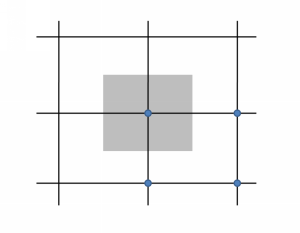For VOF and related techniques, an essential accuracy criteria is the conservation
of volume (or mass). When simulating an injection, for example, it is important that
all of the fluid volume that enters the domain is reflected in the distribution. Volume loss can be an issue when a simulation
involves many time steps, even with a highly accurate integration of Equation 21–1. This is because the small
volume errors associated with each time step can accumulate to yield a significant
loss.
In order to minimize the volume loss, time is handled differently in VOF
simulations than in an ordinary time-dependent scheme. First of all,
Ansys Polyflow attempts to minimize the number of time steps needed by varying the
length of time used for the time steps (). Though you set
for the initial time step of your VOF simulation, it is
automatically determined for all subsequent time steps based on the outcome of the
previous steps (see the section that follows for descriptions of various scenarios).
Another way that VOF simulations minimize volume loss is the manner in which the
elapsed time is calculated. Consider the calculations that are performed at each
time step: the flow field (that is, the values for velocity/pressure and possibly
other variables, such as the temperature or a chemical species concentration) is
computed for a time step, followed by an integration of Equation 21–1. When the new values for the
field are available for the domain, a determination can be made
for the subdomains that surround every node (for example, the gray area in Figure 21.2: A Control Volume Surrounding a Node) as to whether
is above the threshold (which represents a "wet" node condition)
or below the threshold (which represents a “dry" node condition). In this
manner, the distribution of wet/dry nodes is known at each time step.
Because it is not possible to numerically integrate discontinuous data without
dissipation, the variation in the size of the wet domain is generally lower than the
net volume of fluid that entered the domain through the inlets during the time step.
To avoid translating this dissipation into a volume loss, Ansys Polyflow calibrates
the elapsed time for a successful time step based on the amount of fluid that
entered the domain, rather than simply equating it with . Note that this calibration is only performed when the flow rate
of fluid entering the domain is nonzero; when no fluid enters (for example, when no inlet
is present), the elapsed time is set equal to the initially defined value of the
time step. For this reason, you should define the initial time step conservatively.



